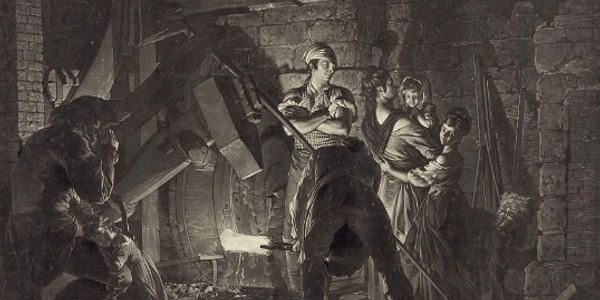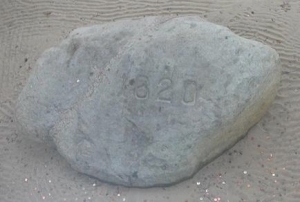-
Pre-Revolution Timeline - 1740-1759
The French and Indian War begins and the colonists are getting tired of the first acts of rules and taxation without enough representation.
More 1700s
Sponsor this page for $150 per year. Your banner or text ad can fill the space above.
Click here to Sponsor the page and how to reserve your ad.
-
Timeline
-
More
-
More
-
More
-
More
-
More
-
More
-
More
-
More
-
More
-
More
-
More
-
More
-
More
-
More
-
More
-
More
-
More
-
More
1740-1749
March 18, 1741 - Twenty-nine years after the first revolt of slaves in New York, a second uprising occurs. Seventeen slaves were hanged after the revolt, thirteen burned, and seventy deported.
1741 - Thomas Faunce, the Plymouth Colony's town record
keeper, identifies the exact rock that lore and stories from his
father had stated was the landing rock.
July 16, 1741 - Mount Saint Elias, Alaska is sited by Danish Captain Vitas Bering under the employment of the Russians.
Minute Walk in History
Fort Matanzas
Take a boat ride, walk, climb, and more around Fort Matanzas, the small fort south of St. Augustine, that when built stopped the British from attacking the city, despite its small size. Listen to the pirate National Park Service ranger give a spectacular story about the fort and much else. He's awesome!!
July 21, 1741 - Two British ships attack Spanish vessels near Fort Matanzas, the stone fort erected on Matanzas Inlet in 1740 after the attacks of the British on St. Augustine.
July 7, 1742 - Fort Frederica and Fort St. Simons attacked by Spanish in the Battle of Bloody Marsh, during the Invasion of the Province of Georgia.
May 23, 1744 - First battle of King George's War begins with raid by New French against the British port of Canso. Four year conflict against northern British colonies takes heavy toll after battles in Maine and Fort Louisbourg in New France.
November 28, 1745 - French raid Saratoga, New York, and follow that up with the August 19-20, 1746 attack on Fort Massachusetts in two of the New France raids deep into the Massachusetts Bay Colony during King George's War.
October 18, 1748 - The Treaty of Aix-la-Chapelle is signed, ending King George's War between France, Great Britain, and their Indian allies in New England and Nova Scotia.
March 16, 1749 - The petition of the Ohio Company to be granted two hundred thousand acres in approved by King George II of England to settle and engage in commerce in the territory of Ohio.
May 17, 1749 - Georgia Trustees petition parliament to overturn the original ban against slavery in Oglethorpe's colony. It would be lifted two years later.
1750-1759
Minute Walk in History
Cumberland Gap
Take a walk with us through the spectacular above ground and below ground nature and history of Cumberland Gap, the gap used by Daniel Boone to explore and eventually settle Kentucky and Tennessee. By 1810, 200,000 to 300,000 had used that trail through the gap to emigrate west. Today, the National Park is a glorious place to site vistas for miles, explore caves by guide or by yourself, and learn about the Civil War history and site earthworks built atop a mountain. Great hiking and camping here, too. Music "Cumberland Gap," played by Uncle Am Stuart, 1924.
March 6, 1750 - Thomas Walker leads expedition into the frontier of Kentucky and discovers the Cumberland Gap.
June 24, 1750 - British Parliament enacts the Iron Act to protect their iron forges from American competition and control the iron trade in the colonies.
June 10, 1751 - British Parliament passes the Currency Act to control the use of paper money in the New England colonies and plantations.
June 15, 1752 - Benjamin Franklin invents the lightning rod after earlier in the year proving that lightning was electricity by flying a kite in a thunderstorm.
May 28, 1754 - George Washington and his troops attack Fort Duquesne, an initial action of the French and Indian War between the English and French which began when French forces built and occupied Fort Duquesne in Pittsburgh and did not heed warnings to leave Virginia territory.
June 19, 1754 - Albany Congress held between representatives of the colonies to discuss mutual defense and a treaty of alliance with the Six Nation tribes as tensions between British and French increase.
July 3, 1754 - Battle of Fort Necessity occurs in southwestern Pennsylvania in a small fort built for supplies. That battle of the French and Indian War ends in a peace document, allowing Washington's withdrawal and surrender of the fort.
July 25, 1755 - Decision to relocate Acadian French from Nova Scotia is made. British relocate 11,500 Acadian French to other British colonies and France over the next eight years; some later settle in Louisiana.
August 3-9, 1757 - French capture Fort William Henry (New York) after a six day siege. This is the battle described in James Fenimore Cooper's book, the Last of the Mohicans.
July 8, 1758 - First battle at Fort Ticonderoga known as the Battle of Fort Carillon begins. British are defeated, but succeed during second battle one year later on July 26, 1759 in the French and Indian War.
History Photo Bomb

Replica of the Walker cabin in Barboursville, Kentucky, 2009. Courtesy Wikipedia Commons. Cabin built after his European discovery of the Cumberland Gap.

Official Souvenirs
Check out the official souvenirs of America's Best History on some of the best historic sites and national parks of the United States at our partners at Teepossible.

Drawing of an Iron Forge, example of one that would have been affected by the rules of England establishing the Iron Act, Boydell. Courtesy Library of Congress. Image Below: Iron Mountains in Clifton Forge, Virginia, circa 1900/1910, Detroit Publishing Company. Courtesy Library of Congress.
Timeline Book

Plymouth Rock from the site of the landing of the Mayflower and start of the Plymouth Colony. Courtesy Wikipedia Commons.
ABH Travel Tip

To get a great idea of how the decades before the Declaration of Independence was written take a trip to Boston. It's a great place to learn about the colony of Massachusetts Bay, too.
About
America's Best History where we take a look at the timeline of American History and the historic sites and national parks that hold that history within their lands.
Photos courtesy of the Library of Congress, National Archives, National Park Service, americasbesthistory.com & its licensors.
- Contact Us
- About
- © 2024 Americasbesthistory.com.
Template by w3layouts.


